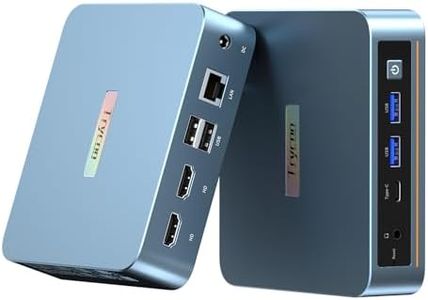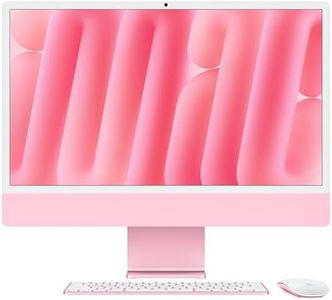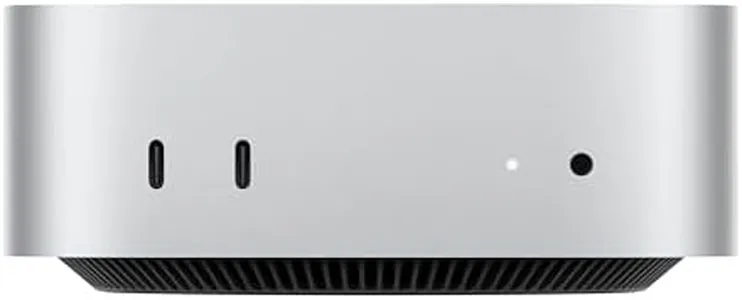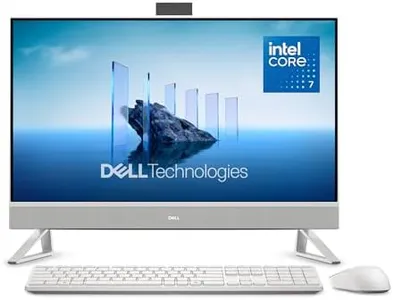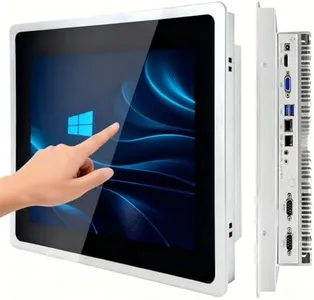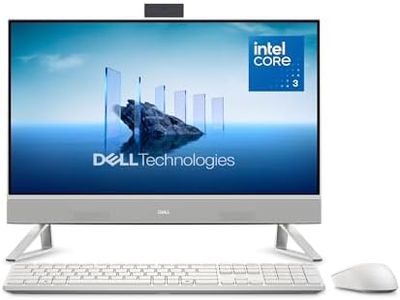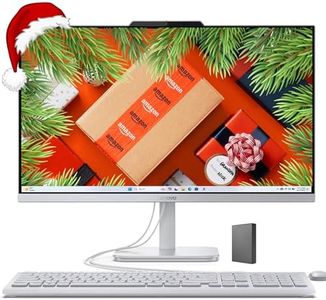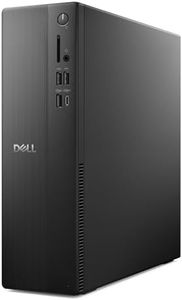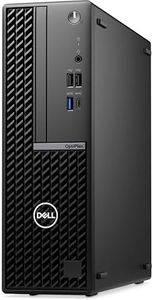10 Best Desktop Computers 2025 in the United States
Our technology thoroughly searches through the online shopping world, reviewing hundreds of sites. We then process and analyze this information, updating in real-time to bring you the latest top-rated products. This way, you always get the best and most current options available.

Our Top Picks
Winner
Dell Tower Desktop ECT1250 - Intel Core Ultra 7-265 Processor, Intel UHD Graphics, 32GB DDR5 5600MT/s Memory, 1TB M.2 SSD, 3.0 SD Card Reader, Dell Wired Keyboard and Mouse, Basic Onsite Service
Most important from
226 reviews
The Dell Tower Desktop ECT1250 is a strong choice for business, education, or multimedia needs. It comes equipped with the Intel Core Ultra 7-265 processor running at 2.4 GHz, which offers solid performance for everyday tasks and some demanding applications thanks to its 20 processing threads and built-in AI features. The 32GB of DDR5 RAM at 5600 MT/s is quite generous, ensuring smooth multitasking and responsiveness even with heavy workloads. Storage-wise, the 1TB M.2 SSD provides fast boot times and ample space for files and programs, making it a significant upgrade over traditional hard drives. The graphics rely on integrated Intel UHD Graphics, which handle basic graphics tasks and multiple monitor setups well but may not be suited for gaming or intensive graphic design. The tower form factor is fairly compact at about 12.8 inches tall, blending a modern design with sustainable materials.
Connectivity is good, supporting up to four full HD monitors or two 4K displays via DisplayPort and HDMI 2.1, plus a 3.0 SD card reader and wireless options like Wi-Fi 6 and Bluetooth. Upgradeability is user-friendly thanks to a tool-less entry and removable side panel, allowing easy access for future RAM or storage expansions. Security features include a TPM chip and physical lock options, making it suitable for business environments. One downside is the integrated graphics, which limits high-end graphical performance, and there is only a single memory slot, meaning upgrading RAM beyond 32GB may not be possible. This model comes with Windows 11 Home and basic onsite service for one year, which is suitable for typical users but might fall short for those needing advanced support or workstation capabilities. This Dell desktop is well-balanced for professional and everyday use, especially if fast memory, storage speed, and multiple monitor support are priorities over heavy gaming or specialized graphics work.
Most important from
226 reviews
Apple 2024 iMac All-in-One Desktop Computer with M4 chip with 10-core CPU and 10-core GPU: Built for Apple Intelligence, 24-inch Retina Display, 16GB Unified Memory, 256GB SSD Storage; Silver
Most important from
466 reviews
The Apple 2024 iMac with the new M4 chip is a strong choice for users who want a stylish and powerful all-in-one desktop that fits neatly into any workspace. Its 10-core CPU and GPU deliver smooth performance for everyday tasks like photo editing, presentations, and even some light gaming, thanks to Apple’s efficient integrated graphics. The 16GB of unified memory helps keep apps running quickly, while the 256GB SSD provides fast storage, though this capacity might feel limited if you work with large files or want to store lots of media locally.
The 24-inch 4.5K Retina display is a highlight, offering sharp, vibrant visuals that are great for creative work and multimedia. The slim design and multiple color options add a modern touch to your desk. Connectivity is solid with up to four Thunderbolt 4 ports, Wi-Fi 6E, and Bluetooth 5.3, allowing you to connect high-resolution monitors and accessories with ease. However, being an all-in-one with integrated components means upgrade options are limited, so you’ll want to choose your specs carefully upfront.
The iMac also shines in seamless integration with other Apple devices, making it a great pick if you’re already in the Apple ecosystem. If you need a desktop primarily for business, creative work, or general use and appreciate sleek design and easy setup, this iMac fits well. But if you require more storage or the ability to upgrade hardware over time, you might need to consider external drives or other desktop options.
Most important from
466 reviews
Apple 2024 iMac All-in-One Desktop Computer with M4 chip with 8-core CPU and 8-core GPU: Built for Apple Intelligence, 24-inch Retina Display, 16GB Unified Memory, 256GB SSD Storage; Pink
Most important from
481 reviews
The Apple 2024 iMac is a sleek all-in-one desktop designed to fit well in stylish home or office spaces, thanks to its thin design and vibrant color options. Powered by Apple's M4 chip with an 8-core CPU and GPU, it delivers smooth performance for everyday tasks such as photo editing, presentations, and light gaming. The 16GB of unified memory helps run several apps at once without slowdown. The 24-inch 4.5K Retina display offers bright, sharp visuals with vivid colors, which is excellent if you value screen quality for creative work or media viewing.
Storage comes with a 256GB SSD, which means fast startup and quick access to files, but this amount may feel limited if you store a lot of large files, so external drives might be necessary. The graphics are integrated, which works well for general use but won’t match dedicated GPUs if you need heavy 3D rendering or high-end gaming. Connectivity is strong, with up to four Thunderbolt 4 ports, Wi-Fi 6E, and Bluetooth 5.3, allowing for fast data transfers and connection to multiple peripherals or external displays.
Being an all-in-one, it saves space and reduces cable clutter, but upgradeability is limited compared to traditional desktops, meaning you can’t easily swap out parts like memory or storage later. The iMac shines if you are already invested in the Apple ecosystem, as it works seamlessly with other Apple devices, enhancing productivity and convenience. This iMac suits users who want a powerful, stylish computer for business, multimedia, and personal use without needing extensive upgrades or specialized gaming hardware.
Most important from
481 reviews
Buying Guide for the Best Desktop Computers
Choosing the right desktop computer can seem overwhelming with so many options available. The most important thing is to focus on how you plan to use your computer. Are you looking for a machine for basic tasks like web browsing and email, or do you need something powerful for creative work or gaming? By understanding your needs, you can narrow down the specifications that matter most and avoid paying for features you won’t use. Take your time to learn about the main specs, as these are what determine how the computer will perform for you now and in the future.FAQ
Most Popular Categories Right Now
